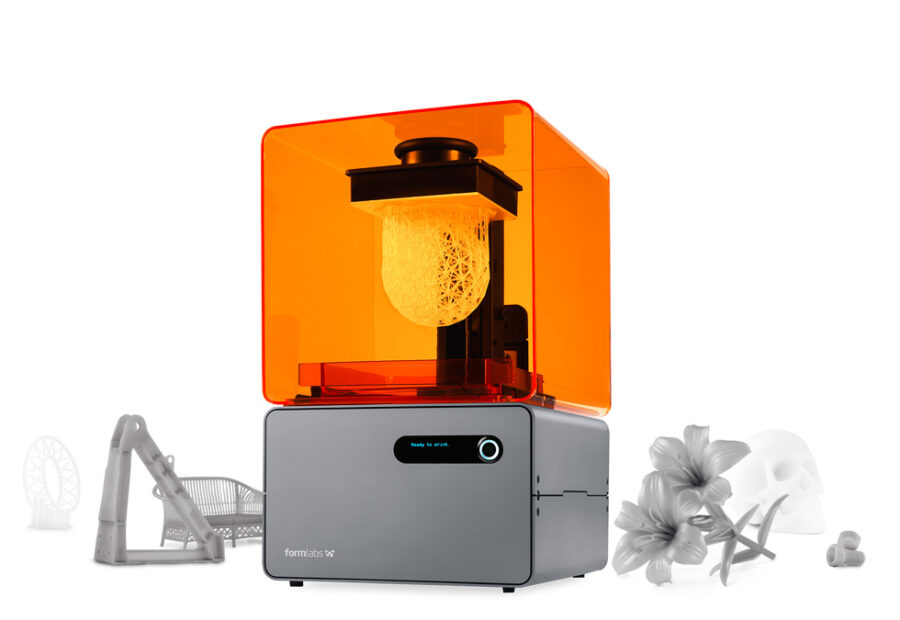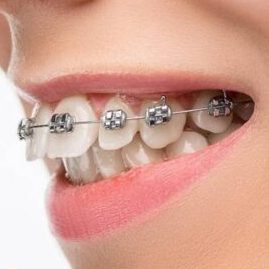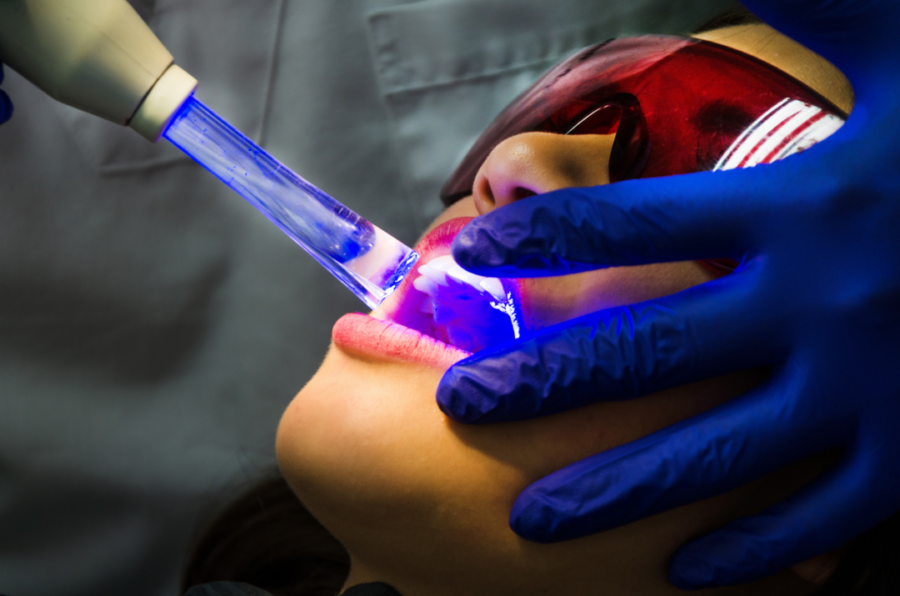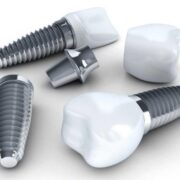As technology advances, it’s no surprise that it’s also revolutionizing the dental industry. From orthodontics to cosmetic dentistry, professionals are constantly innovating new ways to transform and improve smiles. The future of dental technology is exciting and full of possibilities, offering patients faster, safer, and more effective treatments than ever before. With everything from 3D printing to virtual consultations, dentists are now able to provide more personalized and efficient care to their patients. But what does the future truly hold for dental technology? In this article, we’ll explore some of the latest advancements in the field and how they’re changing the way we think about dental care. Get ready to discover the cutting-edge tools and techniques that are transforming smiles today and paving the way for a brighter future in dental technology.
Advancements in Orthodontic Dental Technology
Orthodontic treatments have come a long way from traditional braces, and now with the help of technology, orthodontists can provide more efficient and effective treatments for their patients. One of the most significant advancements in orthodontics is the development of clear aligners. These are custom-made, clear plastic trays that gradually shift teeth into their proper position. Unlike traditional braces, clear aligners are nearly invisible and can be removed for eating, brushing, and flossing.
The use of clear aligners has also been made more efficient with the development of digital scanning technology. With digital scanning, orthodontists can create 3D images of a patient’s teeth and create a custom treatment plan. This technology also allows for more precise measurements, which ensures a more accurate fit for clear aligners. Additionally, digital scanning is more comfortable for patients than traditional impressions, which require a gooey substance to be placed in the patient’s mouth.
From Braces to Aligners

Orthodontic technology has also improved with the development of self-ligating braces. Unlike traditional braces, self-ligating braces do not require elastic bands to hold the wire in place. Instead, the brackets have a built-in mechanism that holds the wire in place. This technology reduces the need for adjustments and has been shown to reduce treatment times. Overall, advancements in orthodontic technology have made treatments more comfortable, efficient, and effective for patients. As technology continues to advance, we can expect even more exciting developments in orthodontics.
Use of 3D printing in dentistry | Dental Technology
3D printing has revolutionized many industries, and dentistry is no exception. With 3D printing, dental professionals can create custom dental implants, crowns, and bridges that fit perfectly in a patient’s mouth. This technology allows for more precise and accurate dental restorations, which can improve the patient’s overall oral health.
3D printing has also made it possible for dentists to create surgical guides for dental implant placement. With these guides, dentists can ensure that implants are placed in the correct position, which reduces the risk of complications and improves the overall success of the procedure.

Another exciting development in 3D printing for dentistry is the creation of bioprinter teeth. Bioprinting is the process of printing living tissue, and researchers are currently working on using this technology to create replacement teeth. These teeth would be made from the patient’s own cells, which would reduce the risk of rejection and improve the overall success of the procedure.
Overall, 3D printing has opened up many possibilities for dental professionals. With this technology, they can create more precise dental restorations and improve the success of dental implant procedures. As 3D printing technology continues to advance, we can expect even more exciting developments in dentistry.
Cosmetic Dentistry and Digital Smile Design Technology
Cosmetic dentistry has become increasingly popular in recent years, and with the help of technology, dental professionals can now provide more personalized and precise treatments for their patients. One of the most significant advancements in cosmetic dentistry is digital smile design. Digital smile design is a process in which dental professionals use digital imaging software to create a virtual model of a patient’s mouth. With this model, they can show the patient what their smile will look like after the procedure. This technology allows for more precise planning and ensures that the patient is satisfied with the final result before undergoing the procedure.


Another exciting development in cosmetic dentistry is the use of lasers for gum contouring. With laser gum contouring, dental professionals can reshape the gum line to create a more aesthetically pleasing smile. This technology is less invasive than traditional gum contouring and can improve the overall appearance of a patient’s smile. Overall, technology has improved the field of cosmetic dentistry by allowing for more personalized and precise treatments. With the help of digital smile design and laser gum contouring, dental professionals can provide their patients with a smile they can be proud of.
Professionals Restore Smile | Dental Technology
Dental professionals are constantly innovating new ways to restore smiles and improve oral health. One of the most significant developments in dental technology is the use of dental implants. Dental implants are artificial tooth roots that are placed in the jawbone to support a replacement tooth or bridge. With dental implants, patients can enjoy improved oral health and a more natural-looking smile.
Another exciting development in dental technology is the use of regenerative medicine. With regenerative medicine, dental professionals can use stem cells to regenerate damaged or missing tissue in the mouth. This technology has the potential to revolutionize the field of dentistry by providing patients with more natural and long-lasting treatments.

Dental professionals are also using technology to improve the success of root canal treatments. With the use of digital imaging and rotary endodontics, dental professionals can more precisely locate and treat infected root canals. These technologies have reduced the need for multiple appointments and increased the success rate of root canal treatments.
Overall, dental professionals are using technology to restore smiles and improve oral health. With the use of dental implants, regenerative medicine, and advanced root canal treatments, patients can enjoy improved oral health and a more natural-looking smile.
Virtual Consultations Technology in Dental
Virtual consultations and tele-dentistry have become increasingly popular in recent years, allowing dentists to provide remote care to their patients. Here are some ways in which virtual consultations and tele-dentistry are changing the dental industry:
Increased Accessibility: Virtual consultations and tele-dentistry make dental care more accessible to patients who live in remote areas or have mobility issues. Patients can consult with dentists from the comfort of their homes, without having to travel long distances.
Improved Efficiency: Virtual consultations and tele-dentistry save time for both dentists and patients. Patients can receive immediate advice and treatment recommendations, without having to wait for an in-person appointment. Dentists can also use these technologies to monitor their patients’ progress and make adjustments to their treatment plans as needed.
Cost-Effective: Virtual consultations and tele-dentistry can be more cost-effective than traditional in-person consultations. Patients can avoid travel expenses and dentists can save on overhead costs.
Reduced Anxiety: For patients who experience anxiety about dental visits, virtual consultations and tele-dentistry can provide a less stressful experience. Patients can receive advice and treatment recommendations in a familiar and comfortable environment.
Pre-Treatment Assessment: Virtual consultations and tele-dentistry can be used to assess patients’ oral health before they come into the office. This can help dentists to prepare for the patient’s visit and provide more effective treatment.
Benefits of Dental Technology for patients
Dental technology has advanced significantly in recent years, offering many benefits to patients. Here are some of the key benefits of dental technology for patients:
Improved accuracy and precision: With the use of digital imaging, 3D printing, and computer-aided design and manufacturing (CAD/CAM) technology, dental professionals can create highly accurate and precise dental restorations, such as crowns, bridges, and veneers.
Reduced treatment time: Dental technology such as same-day crowns and digital impressions can significantly reduce the time it takes for patients to receive treatment. This means fewer appointments and less time spent in the dental chair.
Enhanced patient comfort: Many dental technologies, such as laser dentistry, digital anesthesia, and air abrasion, are less invasive and more comfortable for patients than traditional methods.
Improved diagnostics: Digital X-rays, intraoral cameras, and other diagnostic tools allow dental professionals to identify dental problems earlier and more accurately, which can lead to more effective treatment and better outcomes.
Better patient education: Dental technology such as 3D models and virtual reality simulations can help patients better understand their dental conditions and treatment options, which can lead to more informed decision-making and improved oral health.
Impact of Dental Technology on the Industry
Dental technology has had a significant impact on the dental industry, transforming the way dentists diagnose and treat dental problems. Here are some ways in which dental technology has influenced the dental industry:
Digital Imaging: Digital imaging technology such as digital radiography and 3D imaging has made it easier for dentists to diagnose dental problems accurately. This allows dentists to view high-resolution images of teeth and gums, providing them with a clearer picture of the patient’s dental health. Digital imaging also reduces radiation exposure and eliminates the need for traditional x-ray films.
CAD/CAM Technology: CAD/CAM technology has revolutionized the process of creating dental restorations such as crowns, bridges, and veneers. With CAD/CAM technology, dentists can design and create these restorations in a matter of hours, rather than days or weeks. This technology also allows for more precise and accurate restorations, resulting in a better fit and improved patient outcomes.
Dental Technology in the Smile Industry
Intraoral Cameras: Intraoral cameras are small cameras that are placed inside the patient’s mouth, providing dentists with a close-up view of the teeth and gums. This technology helps dentists to identify dental problems at an early stage, leading to more effective treatment.
Laser Dentistry: Laser dentistry is a minimally invasive technique that uses lasers to treat a variety of dental problems. This technology reduces the need for anesthesia, minimizes bleeding, and speeds up the healing process. Laser dentistry is also more precise than traditional dental techniques, resulting in better outcomes for patients.
Tele-dentistry: Tele-dentistry is the use of technology to provide dental care remotely. This technology has become more prevalent in recent years, as patients have become more comfortable with telemedicine. Tele-dentistry allows dentists to diagnose and treat dental problems without the patient having to leave their home, making dental care more accessible to those who live in remote areas or have mobility issues.
Role of Dentist in Dental Technology Smile
Continuing Education: Dentists can attend continuing education courses to stay informed about new technologies and techniques in the dental industry. Many dental associations and organizations offer courses and seminars on the latest advancements in dentistry.
Research and Development: Dentists can stay up-to-date on new technologies by conducting research and development in their field. By participating in clinical trials and collaborating with other dentists and researchers, dentists can help to advance the field of dentistry and provide their patients with the latest treatments and technologies.


Investing in New Technologies: Dentists can invest in new technologies and equipment for their practices to offer their patients the latest treatments and procedures. This can include digital imaging equipment, CAD/CAM systems, and laser technology.
Collaboration with Dental Laboratories: Dentists can work closely with dental laboratories to ensure that their patients receive the best possible restorations. By communicating with the laboratory technicians and using digital technologies, dentists can ensure that the restorations fit properly and look natural.
Patient Education: Dentists can educate their patients about the latest technologies and procedures available to them. By informing their patients about the benefits of new technologies, dentists can help them make informed decisions about their dental care.
In restoring smiles, dentists can use a variety of techniques and technologies to improve the appearance and function of teeth. This can include teeth whitening, veneers, dental implants, and orthodontics. By using these treatments and technologies, dentists can help their patients achieve a beautiful, healthy smile.
Future of Dental Technology and its potential
The future of dental technology is exciting and full of possibilities. With the continued advancement of technology, we can expect even more precise, efficient, and effective treatments for patients.
One area of potential is the use of artificial intelligence in dentistry. With the use of AI, dental professionals can more accurately diagnose and treat dental conditions. AI can also be used to predict the likelihood of certain dental conditions, allowing for more proactive treatment.
Another area of potential is the use of nanotechnology in dentistry. With the use of nanotechnology, dental professionals can create more precise and efficient treatments. For example, nanotechnology could be used to create dental fillings that are stronger and last longer than traditional fillings.
Overall, the future of dental technology is full of potential. As technology continues to advance, we can expect even more exciting developments in the field of dentistry.
Conclusion
In conclusion, dental technology is revolutionizing the way we think about dental care. With the use of technology, dental professionals can provide more precise, efficient, and effective treatments for their patients. From orthodontics to cosmetic dentistry, technology has improved every aspect of dental care. It’s important for dental professionals to stay informed about the latest developments in the field and be willing to invest in new technologies and equipment. Embracing dental technology is critical for providing the best possible care to patients and ensuring a brighter future for the dental industry.
To make dental prosthetics including crowns and bridges, Royal Dental Clinics Lab employs cutting-edge technology and high-tech tools from across the globe. Since 1983, based on the findings of the International Institute of Dental Research, we have been manufacturing dental crowns. Internal Maxillofacial CBCT with CAD CAM is available.






